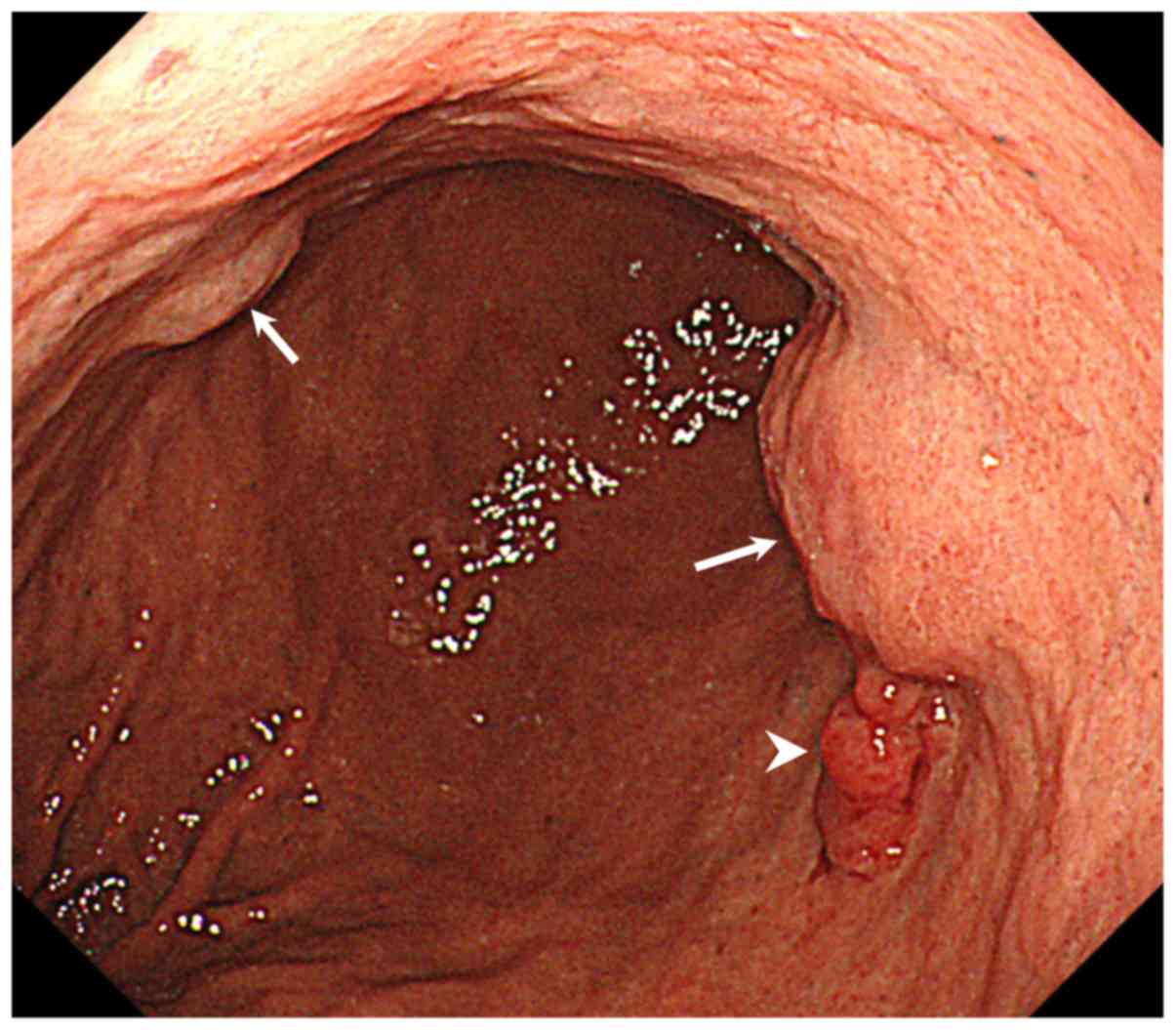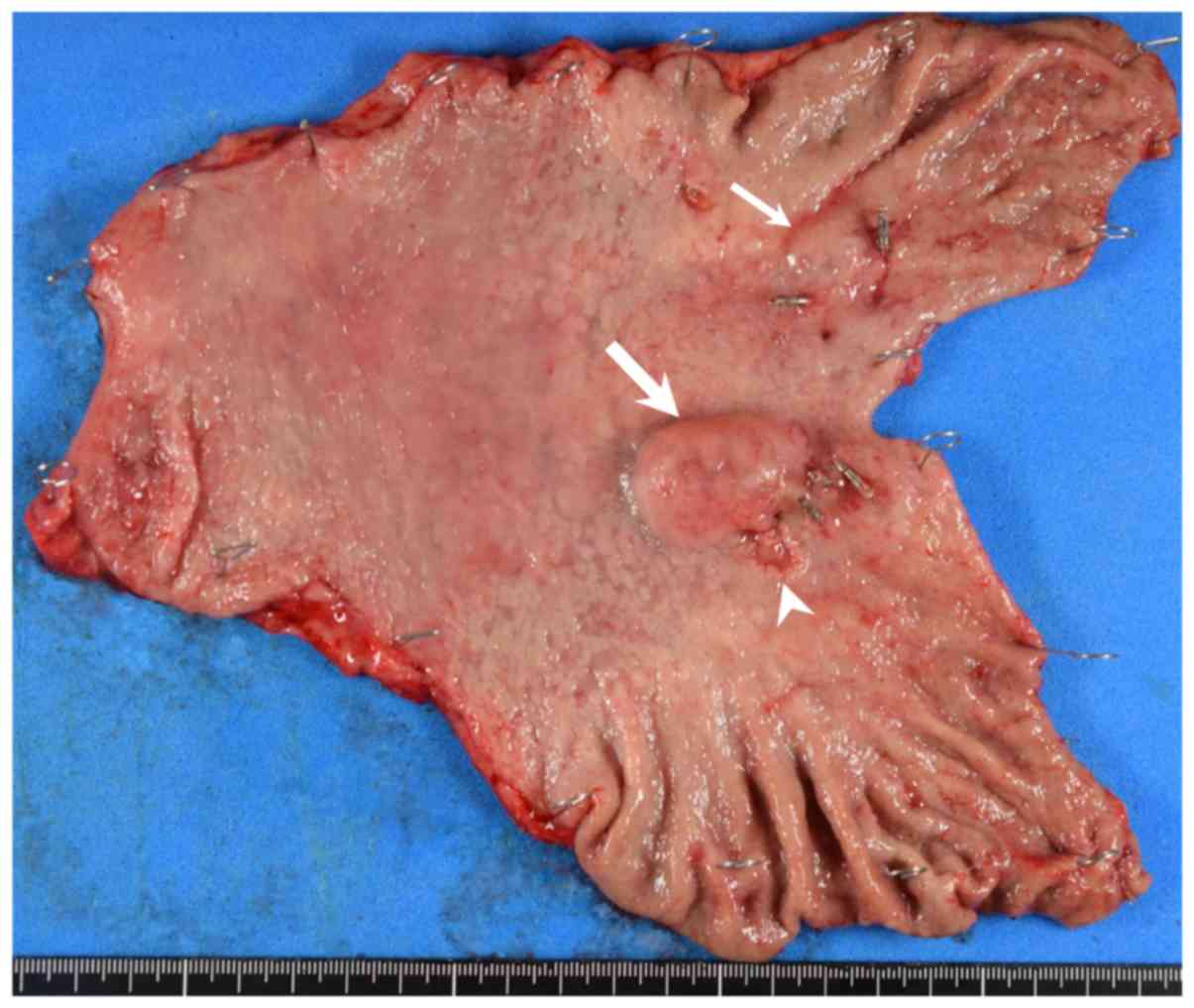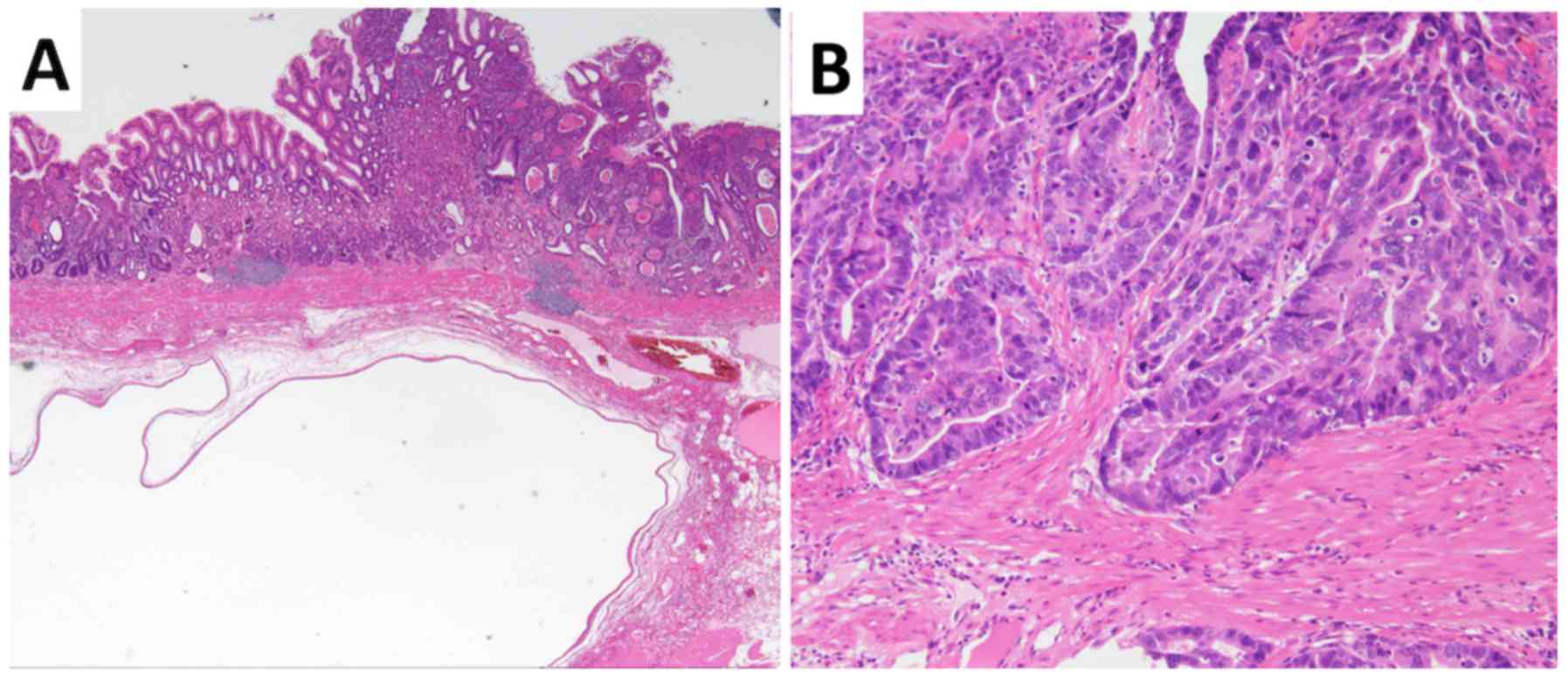Early gastric cancer with multiple submucosal heterotopic gastric gland: A case report
- Authors:
- Published online on: April 18, 2019 https://doi.org/10.3892/mco.2019.1846
- Pages: 583-586
-
Copyright: © Namikawa et al. This is an open access article distributed under the terms of Creative Commons Attribution License.
Metrics: Total
Views: 0 (Spandidos Publications: | PMC Statistics: )
Total PDF Downloads: 0 (Spandidos Publications: | PMC Statistics: )
Abstract
A case of early gastric cancer involving multiple submucosal gastric glands that was treated by distal gastrectomy was described in the present case report. An 85‑year‑old man was referred to our hospital for the treatment of gastric cancer. Esophagogastroduodenoscopy revealed an irregular, nodular, elevated lesion on the posterior wall of the middle third of the stomach, and biopsy specimens indicated well‑differentiated tubular adenocarcinoma. Submucosal tumor (SMT)‑like lesions were detected in the area adjacent to the nodular lesion, in the anterior wall side of the middle third of the stomach. Abdominal contrast‑enhanced computed tomography showed cystic lesions in the middle part of the stomach, and no mass lesions in the liver. The patient underwent distal gastrectomy with regional lymphadenectomy. Macroscopic examination of the resected specimen showed an SMT‑like lesion measuring 2.8x2.6 cm in contact with a superficial, depressed lesion measuring 1.7x0.9 mm in the middle third of the stomach, and another SMT‑like lesion measuring 1.5x1.4 cm in diameter, which was also in the middle third of the stomach. The pathological diagnosis was well‑differentiated tubular adenocarcinoma invading the gastric submucosal layer without lymph node metastasis, but with nearby submucosal heterotopic gastric gland (SHGG) detected. Following surgery, the patient remained symptom‑free without evidence of recurrence for 3 months. The finding of SHGG remains a rare entity, and further studies are warranted to clarify the association between these submucosal lesions and the development of cancer.














